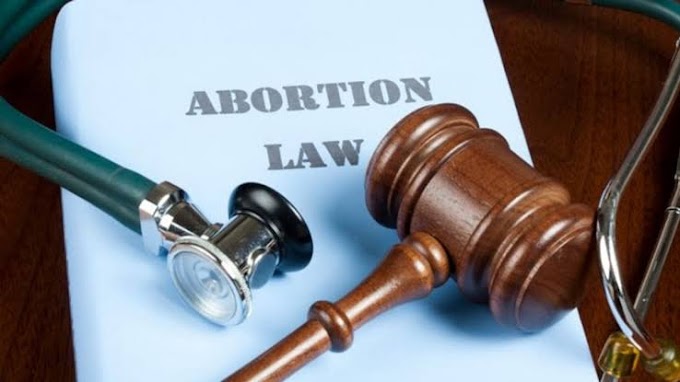SDG 5:GENDER EQUALITY DEEP DIVE
Author:- Aditi Srivastava, a Student of Gd Goenka University
Activists, social leaders,organizations, and women shouted slogans against gender based violence during the protest in Quito,Ecuador, UN Women-2022
INTRODUCTION
ARE WE ON TRACK TO ACHIEVE GENDER EQUALITY BY 2030?
The distance to equal is very long and the time we have is short.
Goal 5:To achieve gender equality and empowerment for all women and girls by 2030 is one of the goals out of 17 sustainable development goals(SDGs).
This goal has 9 targets and 14 indicators and examines all aspects of gender equality, including economic, political and social inclusion and participation, the elimination of violence and harmful practices against women. and ensuring sexual and reproductive health.
SDG 5 refers to women and girls and not to females, except when it relates to female genital mutilation. Why is that?
Being male or female is a biological decision, meaning it refers to the chromosomes and genitalia a person is born with, while being female is a sexual determination, which is more fluid, complex and subjective.
SDG5 is written in such a way that all genders are equal and primarily includes anyone who identifies as a woman or a girl, regardless of their biological sex at birth. But a big caution to reading is that in practice most or many projects that work on gender equality are not intersectional or inclusive of all women,so we have to use the term inclusive when we talk about women and girls, but it's even more important to recognize that in practice this is not always the case, so that we don't have to leave anyone behind . The principles of the 2030 Agenda seek to prioritize the most vulnerable, and it is important that we do so now.
ABSTRACT
Gender equality is the 5th goal of sustainable development goals of the UN. It is the starting point for creating a comfortable,sustainable world for every human being.While achieving the goals for a future that is sustainable for every human being, SDG-5 i.e Gender Equality, will be one of the ways to achieve this goal. So, taking actions to achieve the goals of SDG-5 is not only critical for all the other SDGs itself, but also it helps to proceed in other SDGs as well.
This paper presents the different targets related to SDG 5,gender equality,and the present area where we stand.
KEYWORDS
Target, Women, Gender Equality, Sustainable Development Goal,Employment, Empowerment
TARGETS
Target 5.1
End all forms of discrimination against all women and girls -
Meaning
Discrimination is the unfair or disadvantageous treatment of a class of people. This objective examines whether the legal framework is in place to promote, enforce and monitor gender equality and non-discrimination, and specifically examines legal frameworks that address four main areas -
1) Public life - including the right to vote, exercise public functions and enjoy the same rights as citizens.
2) Violence against women - checks if there are laws punishing violence against women and if these laws are enforced.
3) Employment and economic performance - employability, access to equal pay and parental leave.
4) Marriage and family – e.g. minimum age of marriage and women generally having the same rights as men in relationships.
Where we are
Discriminatory laws and loopholes still prevent women from fully enjoying their human rights. In the area of the general legal framework and public life, more than half of the countries with data have no quotas for women in national parliaments, and almost a fifth maintain some kind of discriminatory nationality law . In the area of violence against women, 83% of countries have committed in their budgets to legislation on violence against women, but 63% of countries do not have laws on rape based on the principle of consent. In terms of employment and economic benefits, more than 90% demand that there be no gender discrimination in employment, but almost half continue to restrict women's access to certain jobs or sectors . In the area of marriage and family, almost a quarter of countries do not give women equal rights in marriage and divorce, and three quarters of countries do not set 18 as the minimum age for marriage for men and women without exception.
Target 5.2
Eliminate all forms of violence against all women and girls in public and private spheres, including human trafficking and sexual exploitation and other Online sexual exploitation Violence against women in online intimate relationships and by people other than their intimate partners-
Physical violence includes acts intended to injure the body of the victim. Sexual abuse is defined as any type of harmful or unwelcome sexual behavior inflicted on someone, whether through the use of physical violence, intimidation or coercion, while emotional abuse includes any behavior that provokes fear or emotional distress. This includes a range of behaviors, including emotionally abusive behavior, such as being regularly humiliated or bullied in public, and controlling behavior.
This target is measured by two indicators - the proportion of women and girls aged 15 or older who have experienced violence in the past 12 months. One focuses exclusively on the partner in the intimate relationship and the other on any other abuser.
Where we are
Nearly one in three women, or 736 million women, has experienced at least one physical or sexual violence since the age of 15. In fact, more than 640 million people, or about 26% of all women aged 15 and over, have been victims of spousal violence. When it comes to violence by other abusers, evidence shows that approximately 7% of women worldwide have been sexually assaulted by someone other than their partner at some point in their lives. However, the actual incidence of non-spousal sexual violence is likely to be much higher due to the particular stigma associated with reporting such violence.
We tend to see regional differences. Rates of violence are consistently higher in low- or low-income areas than in high-income areas. These disparities may be due to the challenges women face when leaving an abusive relationship, such as insufficient financial resources, limited access to formal support services, weak social support networks, and fear of the repercussions associated with the relationship. social stigma. 137% of women are killed every day by someone close to them. It is estimated that more than a third, or 30,000, of the 87,000 women intentionally killed in 2017 were intentionally killed by a current or former intimate partner, and women and girls also account for 72% of victims of trafficking.
Unfortunately, the pandemic has only exacerbated these issues, so these statistics have actually worsened compared to many other SDGs where we have seen continued improvement.
Target 5.3
OF ALL HARMFUL PRACTICES such as child marriage, early and forced marriage and female genital mutilation -
What it means
Child marriage refers to any informal marriage or informal union between a child under the age of 18 and an adult or another child. Girls who marry before the age of 18 are more likely to experience domestic violence and less likely to remain in school. Another harmful practice female genital mutilation refers to all procedures involving partial or total removal of the female external genitalia or other injury to the female genital organs for non-medical reasons.
This target aims to completely eliminate both of these harmful practices.
Where we are
Over the past 10 years, the rate of child marriage has fallen from one in four girls to around one in five now. Before the pandemic, more than 100 million girls were expected to marry in the next decade, but that number is now expected to rise to 10 million more. On the issue of female genital mutilation, over 200 million girls and women live in the 30 countries where female genital mutilation is concentrated in Africa, the Middle East and Asia.
Overall, the practice has declined steadily over the past 30 years, with around one-third of girls aged 15-19 experiencing it, compared to one in two in the late 1980s.
Target 5.4
Identify and value unpaid care and domestic work through the provision of public services, infrastructure and social practices policies and the promotion of shared-
Means-
Unpaid care work refers to work that contributes to meeting the basic physical and emotional needs of families and communities. This includes caring for children, the elderly and the sick, as well as household chores such as preparing and cooking food, collecting firewood, fuel and water. Unpaid care work makes it almost impossible for women to fully realize their economic opportunities, which is why the provision of public services, infrastructure and social protection is so important. This includes affordable child care, a strong health care system, social safety nets, and more.
According to the Swiss Agency for Development and Cooperation, unpaid work can be treated under the triple "R" -
1) Recognize - make available
2) Reduce - general tasks and
3) Redistribute - so men share more chores.
Where we are today
Globally, about 75% of unpaid care work in the world is done by women and women spend about 2.5 times more than men on unpaid care work. Men do more unpaid work each year. It should also be noted that both men and women are taking on more household chores during the pandemic, especially when it comes to childcare.
Target 5.5
Ensure women’s participation in politics, economics and in public service and in leadership at all levels of decision-making in these spheres-
Means-
This target looks at the proposition of women in leadership positions both in government and in the workforce with a goal of them having equal opportunity and being equally represented. So where do we stand on this today?
While the average percentage of women in parliaments around the world is increasing, it is still only 25.6% at the national level and 36.3% at the local government level. At the current rate, it will take at least 40 years to achieve gender parity in government. Only 23 countries have at least 40% female representation in their parliaments.
In business, although women make up 39% of the global workforce, they held only 28.2% of leadership positions in 2019.
Target 5.6
Ensure universal access of sexual rights and reproductive rights in accordance with the programme of action of the international conference on population and development and the Beijing platform for action and the outcome documents of their review conferences-
Sexual and reproductive health and rights, as agreed in the two documents mentioned in this objective, are multi-faceted and include many dimensions. For example, the provision of reproductive health services, including family planning, parental education and care services as well as infertility, appropriate abortion treatment, including abortion prevention and management of the consequences of abortion, and other reproductive health problems. Inform and advise on human sexual and reproductive health and responsible parenthood, and actively discourage harmful practices such as female genital mutilation.
The target is measured by the proportion of women aged 15-49 who make informed decisions about their sexual relationships and reproductive health, and the number of countries with laws and regulations guaranteeing full and equal opportunities for women and men aged 15. Information on sexual and reproductive health care and education for parents.
Where we are
According to the United Nations Population Fund, only 55% of married or unionized women aged 15-49 are able to make their own decisions about their sexual and reproductive health and rights.
Gender equality goal also includes three means of achieving the goal, covering women's rights to economic resources and land ownership, access to technology, and enforcement of policies and legislation .
Implementation-
Target 5.A
Reforms to national laws that give women equal rights to economic resources, and access to ownership and control of land and other forms of property, financial services, inheritance and natural resources.
Target 5.B
Improve the use of enabling technologies, in particular ICTs, to promote the empowerment of women.
Target 5.C
Accept and strengthen the promotion of sound policies and their application to all women at all levels and promotion of gender equality and empowerment of all.
The sustainable development goals report 2022
CONCLUSION
Achieving SDG-5’s goal will help to achieve equal and standard access to education for both women as well as girls who cannot have education because of being discrimination and completing one of the goals of quality education (SDG-4). Abolishing discrimination against women and girls will also help to achieve goals to reduce inequalities (SDG-10) by supporting their participation in the elections, decent work and economic growth (SDG-8) by assisting how to access to the labor market and providing them with decent work opportunities to survive (SDG-16) by acquiring more pleasant societies. In short, if SDG-5 goals are achieved, then they will affect the other sustainable development goals of the UN as well. Thus this is the time that we all should come together as a global community and demand for better access to resources for women and girls, better laws and security.
WOMEN AND GIRLS CANNOT WAIT ANY LONGER.
WE NEED BOLD ACTIONS TO END DATA GAPS AND SPEED UP THE PROGRESS. UNLESS MORE IS DONE BY THE ENTIRE GLOBAL COMMUNITY, WE WILL NOT BE ABLE TO ACHIEVE GENDER EQUALITY.
Reference
¹ Unwomen.org-explainer:sustainable development goal




![Freedom of Speech in India [Indian Supreme court and Law of Sedition]](https://blogger.googleusercontent.com/img/a/AVvXsEiGLLUmLKq5Da6xDZplasOZHKRj-jOhWPkoeuy0_Eq757tUpOiHz-xooXwIlAjF0-hmBfi-TtMIv6on_sVgBXVq4wbWwnbsqLOcNX22S8C2aSq-ZuK3vn9wWAx8tXByYOBfwc0hs6b8RJV84YNFG2greouGKjup6g8kN-xVlchW33VHdSSmrhLC1BUEVbGp=w680)





